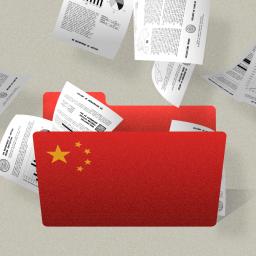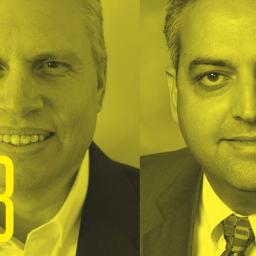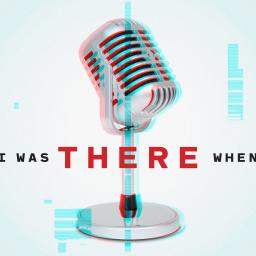 |
by Will Douglas Heaven on (#5STNJ)
In the two years since OpenAI released its language model GPT-3, most big-name AI labs have developed language mimics of their own. Google, Facebook, and Microsoft—as well as a handful of Chinese firms—have all built AIs that can generate convincing text, chat with humans, answer questions, and more. Known as large language models because of…
|
MIT Technology Review
| Link | https://www.technologyreview.com/ |
| Feed | https://www.technologyreview.com/stories.rss |
| Updated | 2025-12-20 13:03 |
 |
by MIT Technology Review Insights on (#5STFG)
The global pandemic accelerated the trend toward a work-from-anywhere, distributed workforce. As we approach a post-pandemic world, companies—and employees—expect this trend to become the norm. While IT departments are rapidly configuring and deploying devices, infrastructure, and software to support the shift in a secure and productive way, employees are likewise having to reset priorities and…
|
 |
by Casey Crownhart on (#5ST5C)
There’s enough heat flowing from inside the earth to meet total global energy demand twice over. But harnessing it requires drilling deep underground and transforming that heat into a usable form of energy. That’s difficult and expensive, which is why geothermal power—sometimes called the forgotten renewable—makes up only about 0.3% of electricity generation worldwide. Now,…
|
 |
by Tatyana Woodall on (#5ST3J)
NASA plans to launch a new x-ray telescope this week to help answer questions like what’s inside a black hole and how bright pulsars can get. On Thursday, December 9, the agency will launch the Imaging X-ray Polarimetry Explorer, known as IXPE, on a Falcon 9 rocket from NASA’s Kennedy Space Center in Florida. It will be the first x-ray telescope capable of measuring polarization, a property of…
|
 |
by Anthony Green on (#5SSXC)
Voice technology is one of the biggest trends in the healthcare space. We look at how it might help care providers and patients, from a woman who is losing her speech, to documenting healthcare records for doctors. But how do you teach AI to learn to communicate more like a human, and will it lead…
|
 |
by Jonathan O'Callaghan on (#5SRQ8)
If all goes to plan, next month SpaceX will launch the largest rocket in human history. Towering nearly 400 feet tall, the rocket – Starship – is designed to take NASA astronauts to the moon. And SpaceX’s CEO, Elon Musk, has bigger ambitions: he wants to use it to settle humans on Mars. Much has already…
|
 |
by Charlotte Jee, Will Douglas Heaven on (#5SQEW)
Kevin Cowley remembers many things about April 15, 1989. He had taken the bus to the Hillsborough soccer stadium in Sheffield, England, to watch the semifinal championship game between Nottingham Forest and Liverpool. He was 17. It was a beautiful, sunny afternoon. The fans filled the stands. He remembers being pressed between people so tightly…
|
 |
by Charlotte Jee on (#5SMSB)
Countries are slamming their borders shut again. Since the omicron variant was discovered in southern Africa and reported to the World Health Organization last week, more than 50 countries have imposed border controls. They target mostly South Africa and Botswana, which reported the first cases, but also neighboring countries in the region. The aim was…
|
 |
by Eileen Guo, Jess Aloe, Karen Hao on (#5SKBB)
A visiting researcher at UCLA accused of hiding his connection to China’s People’s Liberation Army. A hacker indicted for breaking into video game company servers in his spare time. A Harvard professor accused of lying to investigators about funding from China. And a man sentenced for organizing a turtle-smuggling ring between New York and Hong…
|
 |
by James Temple on (#5SJFD)
Construction of solar farms, wind turbines, and other sources of renewable power will soar over the next five years as nations set stricter climate policies and more ambitious emissions targets. New renewable electricity capacity will set another record this year, at 290 gigawatts, according to a new report from the International Energy Agency. That’s roughly…
|
 |
by Antonio Regalado on (#5SJ77)
The discovery of the omicron variant of covid-19 in southern Africa shows how sequencing the genes of a virus can give an early alert to dangerous-looking changes in its genome. Omicron has more than 30 mutations in the important “spike” gene, some of which have previously been seen in other variants and are thought to…
|
 |
by Charlotte Jee on (#5SHSV)
The news: A US Food and Drug Administration panel has voted by 13 to 10 to recommend that the government authorize Merck’s antiviral pill for patients with early covid-19 who are at high risk for severe infection. The drug, called molnupiravir, has been shown to reduce the risk of hospitalization and death, although by less…
|
 |
by Charlotte Jee on (#5SFP1)
The news: Just five days ago, South African scientists informed the World Health Organization that they’d identified a new covid-19 variant. The situation has escalated rapidly since then. The variant, known as B.1.1.529, has already been found in many countries across the world. On Friday it was designated a variant of “concern” by the WHO, which…
|
 |
by Ruchi Kumar on (#5SC51)
When Afghanistan fell to the Taliban in August, Mohammad Yasin had to make some difficult decisions very quickly. As the country reeled from the shock of the insurgent takeover, the 21-year-old—whose name has been changed to protect his safety—snuck into his small place of business and got to work. He began erasing some of the…
|
 |
by Tatyana Woodall on (#5SB3B)
In August 2022, a NASA probe called Psyche will set out to explore a giant metallic asteroid called Psyche 16, to help scientists learn more about how planets form. The way Psyche reaches its target, though, will be different from typical NASA missions. Building on technology used in previous missions, including Dawn and Deep Space 1, solar power will help propel Psyche into deep space. If that proves successful, it could be the start of a…
|
 |
by Ahmed Ali on (#5S9SC)
Thanks to advancements in speech and natural language processing, there is hope that one day you may be able to ask your virtual assistant what the best salad ingredients are. Currently, it is possible to ask your home gadget to play music, or open on voice command, which is a feature already found in some…
|
 |
by James Temple on (#5S9JJ)
Nations are poised to begin building an international carbon market, after finally adopting the relevant rules at the UN climate conference in Glasgow earlier this month. Under the COP26 agreement, countries should soon be able to buy and sell UN-certified carbon credits from one another, and use them as a way to achieve greenhouse gas…
|
 |
by Anthony Green on (#5S98W)
Defining what is, or isn’t artificial intelligence can be tricky (or tough). So much so, even the experts get it wrong sometimes. That’s why MIT Technology Review’s Senior AI Editor Karen Hao created a flowchart to explain it all. In this bonus content our host and her team reimagined Hao’s original reporting, gamifying it into…
|
 |
by Patrick Howell O'Neill on (#5S87C)
The story has been updated to include the French Ministry of Foreign Affairs’ denial that it was in the process of purchasing NSO Group tools. In July, accusations emerged that spyware from NSO Group had targeted French president Emmanuel Macron, causing a major controversy. The company denied the claims—part of a string of allegations about…
|
 |
by MIT Technology Review Insights on (#5S799)
Hackers around the globe are smart: they know that it isn’t just good code that helps them break into systems; it’s also about understanding—and preying upon—human behavior. The threat to businesses in the form of cyberattacks is only growing—especially as companies make the shift to embrace hybrid work. But John Scimone, senior vice president and…
|
 |
by Karen Hao on (#5S58E)
Myanmar, March 2021. A month after the fall of the democratic government. In 2015, six of the 10 websites in Myanmar getting the most engagement on Facebook were from legitimate media, according to data from CrowdTangle, a Facebook-run tool. A year later, Facebook (which recently rebranded to Meta) offered global access to Instant Articles, a…
|
 |
by Jane Qiu on (#5S497)
Michael Worobey hasn’t always been certain about where covid originated. During the pandemic, the University of Arizona professor has studied how the virus changes over time, and was among a group of 18 influential scientists who signed a letter in May calling for further investigation to help prove or disprove the theory that SARS-CoV-2 emerged…
|
 |
by MIT Technology Review Insights on (#5S2JR)
From cars to planes, the future of transportation is already here—and is changing rapidly. Software engineering is increasingly central to both the development and maintenance of all kinds of vehicles. That means more people need to start thinking like systems engineers. Dale Tutt, vice president of aerospace and defense industry for Siemens Software, says this…
|
 |
by The Editors on (#5S1AE)
Our 35 Innovators Under 35 competition for 2022 is now open for nominations. You can nominate great candidates from now until 10 p.m. EST on January 24, 2022. We’ve been publishing a list of young innovators for more than two decades now. The list always includes fascinating stories of young people working to employ technology…
|
 |
by Siobhan Roberts on (#5S16Y)
At long last, physicists from Harvard and MIT have found the killer application for quantum computing: a Mario Bros. GIF made from qubits. The qubits (quantum bits) can also be arranged in a Space Invaders design, or Tetris, or any other shape—your geometrical wish is the qubits’ command. The GIFs were offered up by QuEra…
|
 |
by MIT Technology Review Insights on (#5S00J)
The next wave of aerospace is just around the corner, and a lot of that innovation is happening thanks to new, faster methods of development. “What’s happening now is that companies are trying to understand how they take the lessons from Agile software development and apply those to Agile product development,” explains Dale Tutt, vice…
|
 |
by MIT Technology Review Insights on (#5RYQX)
Data is growing at a meteoric rate. In fact, the total amount of data generated by 2025 is set to accelerate exponentially to 175 zettabytes.1 And over the next two years, enterprise data is expected to increase at a 42% annual growth rate. Hidden within these vast volumes of data are insights into consumer behavior,…
|
 |
by Will Douglas Heaven on (#5RZCQ)
In 2018, when Google employees found out about their company’s involvement in Project Maven, a controversial US military effort to develop AI to analyze surveillance video, they weren’t happy. Thousands protested. “We believe that Google should not be in the business of war,” they wrote in a letter to the company’s leadership. Around a dozen…
|
 |
by Tanya Basu on (#5RZ92)
In Facebook’s vision of the metaverse, we will all interact in a mashup of the digital and physical worlds. Digital representations of ourselves will eat, talk, date, shop, and more. That’s the picture Mark Zuckerberg painted as he rebranded his company Meta a couple of weeks ago. The Facebook founder’s typically awkward presentation used a…
|
 |
by Bobbie Johnson on (#5RYT5)
Germany’s coronavirus case numbers have reached their highest levels since the early days of the pandemic, with warnings that covid is “spreading dramatically” and requires a “quick and unified response.” At the same time, the Netherlands is imposing partial restrictions to control rising case levels, including an 8 p.m. curfew on stores and restaurants, and…
|
 |
by Martha Leibs on (#5RYGT)
Companies across all industries are faced with the urgent need to transform the way they do business, including financial services, but changes abound with governance, security, and culture. A shift in mindset and perspective away from “the way things have always been done” is key to a successful digital transformation and to providing the frictionless…
|
by Jenn Webb on (#5RY7T)
Thank you for joining us on “The cloud hub: From cloud chaos to clarity.” This white paper discusses how blockchain technology can transform public records management. A cloud-based platform to seamlessly authenticate digital records can save costs, create faster turnaround time, and enhance customer service.
by Jenn Webb on (#5RY52)
Thank you for joining us on “The cloud hub: From cloud chaos to clarity.” Jorge Balestra, global director of Advanced Analytics, Kraft Heinz, goes behind the scenes to explain how the company drove data transformation and cloud migration with Infosys Cobalt and Snowflake without disrupting the business. Click here to continue.
 |
by Siyuan Meng on (#5RXYQ)
The draining 996 work schedule—named for the expectation that employees work 9 a.m. to 9 p.m., six days a week—has persisted in Chinese companies for years despite ongoing public outcry. Even Alibaba co-founder Jack Ma once called it a “huge blessing.” In early October this year, it seemed the tide might have been turning. After hopeful signs of increased government scrutiny in August, four aspiring…
|
by Jenn Webb on (#5RT8E)
Thank you for joining us on “The cloud hub: From cloud chaos to cloud clarity.” MACH-ready commerce vendors provide benefits of flexibility and scalability through the API layer, but they only work if the solution is used “as is.” E-commerce companies often seek the ability to solve X, the unknown variable during the always-on digital…
by Jenn Webb on (#5RT8F)
Thank you for joining us on “The cloud hub: From cloud chaos to cloud clarity.” Read this viewpoint to understand how investment in digital technologies can restructure the health care business to be resilient and responsive in a post-covid era. Click here to continue.
by Jenn Webb on (#5RT8G)
Thank you for joining us on “The cloud hub: From cloud chaos to cloud clarity.” This white paper discusses how blockchain technology can transform public records management. A cloud-based platform enables various digital records, such as birth registrations, to be seamlessly authenticated, resulting in cost savings, faster turnaround time, and enhanced customer service. Click here…
by Jenn Webb on (#5RT8H)
Thank you for joining us on “The cloud hub: From cloud chaos to cloud clarity.” Alan Feeley, CIO of Siemens Gamesa, explains how the producer of clean energy standardized implementations across multiple rollouts by leveraging the cloud. Click here to continue.
by Jenn Webb on (#5RT8J)
Thank you for joining us on “The cloud hub: From cloud chaos to cloud clarity.” We hope you enjoy this article. Enterprises looking to accelerate their cloud journeys need to ensure the CISOs are part of the process of creating foundational building blocks because cybersecurity risks are at an all-time high. Click here to continue.
by Jenn Webb on (#5RT8K)
Thank you for joining us on “The cloud hub: From cloud chaos to cloud clarity.” We hope you enjoy this article. A new breed of ransomware attacks targeting even the cloud and SaaS data, is becoming a major business risk. In this article, Vishal Salvi, SVP & CISO at Infosys, discusses the impact of the…
by Jenn Webb on (#5RT8M)
Thank you for joining us on “The cloud hub: From cloud chaos to cloud clarity.” We hope you enjoy this article. Estimating the long-term cost of data breaches to brands and businesses for different industries. Click here to continue.
by Jenn Webb on (#5RT8N)
Thank you for joining us on “The cloud hub: From cloud chaos to cloud clarity.” We hope you enjoy this article. Estimating the long-term cost of data breaches to brands and businesses today. Click here to continue.
by Jenn Webb on (#5RT6C)
Thank you for joining us on “The cloud hub: From cloud chaos to cloud clarity.” We hope you enjoy this article. Andy Cooper, senior vice president of Infrastructure and Cloud Services at Assurant, explains how a greenfield approach to adopting cloud helped radically transform their business. Click here to continue.
by Jenn Webb on (#5RT6D)
Thank you for joining us on “The cloud hub: From cloud chaos to cloud clarity.” We hope you enjoy this article. Cloud is no longer about saving time and money. New research from Infosys shows that businesses stand to add $414 billion of annual profit by using the cloud to increase their speed and capabilities…
by Jenn Webb on (#5RT6E)
Randhir Gandhi, CEO of SPS, and Jay Nair, senior vice president of Financial Services at Infosys, explain how SPS digitally transformed its mortgage servicing value chain and improved customer experience by leveraging applied AI and Cobalt offerings from Infosys. Click here to continue.
by Jenn Webb on (#5RT6F)
Thank you for joining us on “The cloud hub: From cloud chaos to cloud clarity.” We hope you enjoy this article. A combination of cloud computing, AI, and deep data analytics is turning decades and century-old enterprises into new-age platforms competing with the digital disruptors. Click here to continue.
by Jenn Webb on (#5RT6G)
Thank you for joining us on “The cloud hub: From cloud chaos to cloud clarity.” We hope you enjoy this article. In the next several years, the cloud will move the needle for AI from being experimental to becoming an enterprise-wide presence. The two technologies will complement each other. Click here to continue.
by Jenn Webb on (#5RT4K)
Thank you for joining us on “The cloud hub: From cloud chaos to cloud clarity.” We hope you enjoy this article. Michael Tonge, director of partnerships, hospitality, and ticketing, French Tennis Federation, talks about how they have redefined the experience for fans, players, and broadcast partners using the cloud. Click here to continue.
by MIT Technology Review Insights on (#5RQGJ)
The Asia Pacific region has enjoyed decades of economic growth—from the post-Second World War rise of Japan, to the rapid industrialization of the “Four Asian Tigers” (South Korea, Taiwan, Singapore, and Hong Kong) between the 1960s and 1990s, along with China’s meteoric rise through the late 20th century, and today’s fast-growing markets in Southeast Asia.…
 |
by Anthony Green on (#5RQKH)
Last month, the primary source for the Wall Street Journal’s Facebook Files, revealed her identity in an episode of 60 Minutes. Frances Haugen, a former product manager at the company, says she came forward after she saw Facebook’s leadership repeatedly prioritize profit over safety. She then appeared before lawmakers in the US and the UK to talk…
|